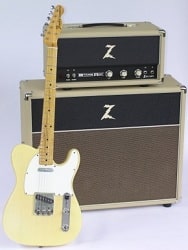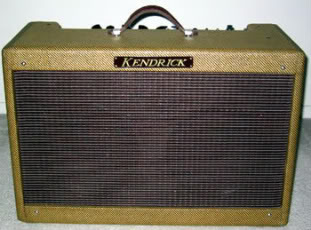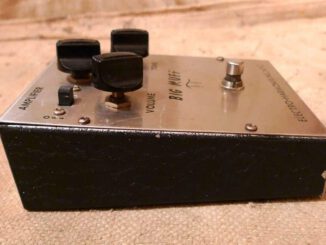 Many different types of speakers have been used over the years to amplify electric guitars. The most common are speakers with 10-inch and 12-inch measurements. Generally speaking (pun intended), a smaller speaker produces more top end, or treble, than a larger one. Thus, an amp outfitted with 10’s usually has a brighter, tighter sound and the same amp with 12’s will be darker sounding.
Many different types of speakers have been used over the years to amplify electric guitars. The most common are speakers with 10-inch and 12-inch measurements. Generally speaking (pun intended), a smaller speaker produces more top end, or treble, than a larger one. Thus, an amp outfitted with 10’s usually has a brighter, tighter sound and the same amp with 12’s will be darker sounding.
The type of cabinet that speakers reside in is a huge part of the tone equation, too. An open-back cabinet will be a bit thinner and air-infused, while a closed-back cabinet will be tighter and punchier, as sealing up the back gives the speakers something to push against.
Many blues and country players live and die with their old open-back Fender combo amps, the 4×10 Super Reverb for blues and the venerable 2×12 Twin Reverb for country. These amps defined the sound of their styles in many ways and are tonal icons any way you cut it. In rock circles, the 4×12 Marshall cabinet, with a closed back, has been the weapon of choice since the 1960’s and has provided the basic sonic blueprint for rock guitar sound. Of course, much research has been done since the 60’s and now amp builders can custom-create different cabinet sizes to compliment specific speakers to get the sound a player may be after.
There are also hybrid cabs and combos out there now that mix 10- and 12-inch speakers to get a blend of the 12’s low end and the ‘zing’ of the 10’s. Another point of contention is the power handling capabilities of different speakers. A lower-wattage speaker will break up, or distort, more easily while a speaker that can handle more power has more headroom, or sound free from distortion. The choice is largely up to the player involved and depends on the styles of music being played. A good way to learn the differences in speakers and cabinets is to play the same guitar and head through a variety of cabinets and really pay attention to the unique sound of each.
Now you just need to ask yourself–do you want a Tube or Solid State head?




Be the first to comment